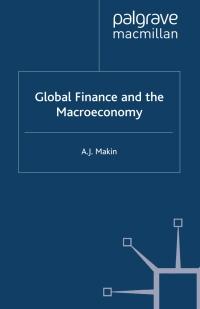Question
Great White Hall: Flatland Views has advertised for proposals to build a new community center, but the city council cannot agree on how to evaluate
Great White Hall:
Flatland Views has advertised for proposals to build a new community center, but the city council cannot agree on how to evaluate the submitted proposals. The request for proposal (RFP) specified that respondents had to meet certain basic needs, although optional items could be included. The RFP also asked that each respondent calculate a benefit/cost (B/C) ratio using a discount rate of 12%. The RFP did specify the approximate size of each optional facility and the use that could be expected (and the value of such use in dollars per hour). The RFP stipulated that the council would select a package of facilities based on estimated construction costs and B/C ratios. Since this package might not match any proposal, the council could issue a new RFP. However, if a new RFP is issued, only respondents to the first RFP may respond. The councils intent is to provide an incentive for participation in the first RFP. Instead of a second RFP, the council could choose to simply negotiate with one of the original bidders. Three firms responded to the RFP, but they used different assumptions on how to calculate the ratio as well as including different options within their proposals. Their construction materials and associated lives are similar, but their designs differ substantially. The proposals can be summarized as follows.
Tightfisted Proposal
Averell Johnson, the conservative patriarch of the citys construction community, has proposed a bare-bones facility (see Table 16-1). Assuming 50 years of use and end-of-period cash flows, his proposal has a B/C ratio of __.1 His proposal also assumes that construction expenditures are all made at the start of the construction period.
Table 16-1 Tightfisted Proposal Construction:
1 year: $2.5 million Annual operation: Gym: $120,000 City offices: $190,000
Annual benefit: Gym: 60 hours/week at $200/hour
Major Projects Proposal
The proposal that has been supported by the town and gown crowd includes a small auditorium/theater and a library as well as the gym (see Table 16-2). Major Projects Inc. has evaluated the proposal over 30 years of use for the benefits and for a 12-month term for the construction phase. Major Projects has assumed end-of-period cash flows, but they have analyzed the construction phase as 12 monthseach with an equal share of the construction expenditures. Their calculated B/C ratio is.
Table 16-2 Major Projects Proposal
Construction: 12 months: $4.8 million
Annual operation: Gym: $110,000 City offices: $165,000 Library: $450,000 (mostly salaries) Theater: $65,000 Annual benefit: Gym: 60 hours/week at $200/hour Library: $0.5 million in improved education Theater: 16 hours/week at $450/hour
Energy Breakthrough Proposal
The third proposal (Table 16-3) is from a new firm that specializes in the design and construction of energy-efficient structures. They based their B/C ratio, _____, on assumptions of 40 years of use and costs and benefits that flow continuously over that time (distributed rather than end-of-period cash flows).
Table 16-3 Energy Breakthrough Proposal
Construction: 1 year: $3.9 million
Annual operation: Gym: $ 65,000 City offices: $100,000 Theater: $15,000
Annual benefit: Gym: 60 hours/week at $200/hour Theater: 16 hours/week at $450/hour
The Councils Solution
Overwhelmed by the responses, the city council has decided to hire you as a consultant. Your contract requires you to calculate comparable ratios, to recommend a package of facilities, and to recommend a contractor.
Options
1. The problem can be simplified by specifying that all projects assume end-of-period cash flows except for construction costs, which could be specified to occur before construction begins. This may or may not be the best assumption.
2. The problem can be simplified by limiting it to the calculation of the omitted B/C ratios.
3. The problem can be simplified by reducing the scope of the consultants contract to constructing valid comparisons of the three proposals.
QUESTIONS
1) What are the steps needed to solve the problem?
Step by Step Solution
There are 3 Steps involved in it
Step: 1

Get Instant Access to Expert-Tailored Solutions
See step-by-step solutions with expert insights and AI powered tools for academic success
Step: 2

Step: 3

Ace Your Homework with AI
Get the answers you need in no time with our AI-driven, step-by-step assistance
Get Started


